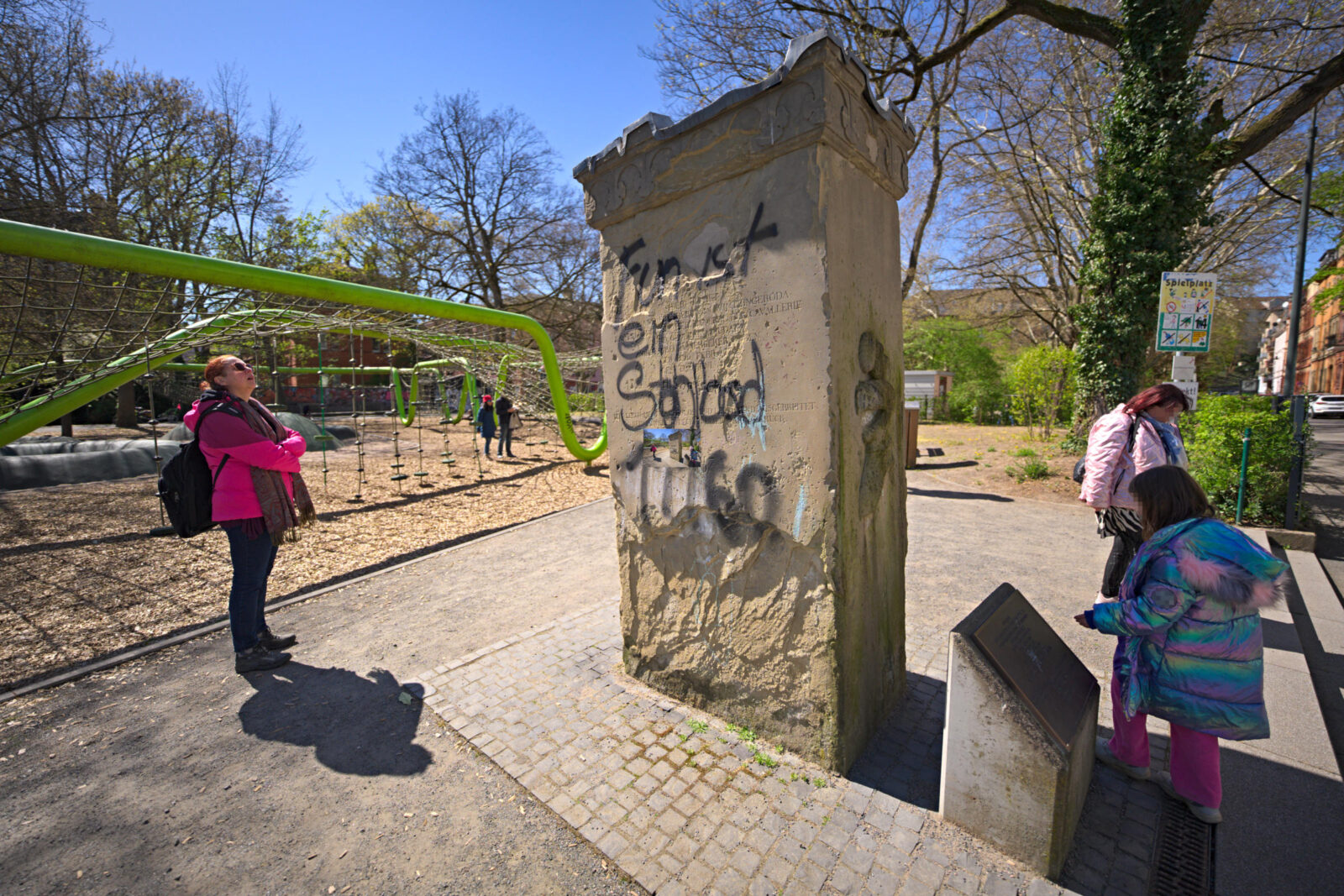The area that later became Wiesbaden was already settled by the Romans around the birth of Christ. Burials of Roman, Frankish and Alemannic origin dating until the 6th century have been found at various locations in the present-day city. Around 830, a source mentions a place called Wisibada. It is also known that there was a church dedicated to St. Mauritius, which was built around 780/790. It stood on the site that had been the center of a Roman settlement centuries before and was the first of 4 churches of the same name that were built on this site over the course of time. The first mention of a graveyard (surrounding the second church, which was built about 965) dates back to 1248, making it the first cemetery that can be attributed to the town of Wiesbaden. With a population of just a few hundred, there was enough space for burials here at that time. As a result of population growth and for reasons of hygiene, it was decided in 1573 to build a cemetery for the poor outside the town on the so-called Heidenmauer (“pagan wall”; a wall of Roman origin that still exists), the “Todtenhof1 an der Heidenmauer” (“dead’s yard on the pagan wall”), Wiesbaden’s second cemetery. The more prosperous citizens could still find their final resting place in or near the church for a fee. It was not until 1690 that it was decreed that all deceased persons from Wiesbaden should be buried on the Heidenmauer, so that the cemetery for the poor finally became a cemetery for citizens.

As the population continued to grow, the cemetery was extended several times. At the end of the 1820s, however, it was discovered that more and more undecomposed bodies were being found when digging fresh graves, so planning began for a new, more expandable cemetery further outside the town. This third cemetery, the Todtenhof an der Platter-Chaussee2 (“dead’s yard on the Platter-Avenue”; today: Alter Friedhof, Old Cemetery), was then consecrated on 06.09.1832, while the Todtenhof an der Heidenmauer was closed on the same day after 259 years of use.

Wiesbaden’s second cemetery, in use from 1573 to 1832: In this part of the former Todtenhof an der Heidenmauer is the only remaining tombstone, that of Ferdinand Freiherr von Wintzigenrode, who died in 1818.
It wasn’t long until this third cemetery also had to be extended. Wiesbaden’s population grew much faster than expected, and at the same time the demands of the landowners for the sale of land for an extension became ever greater. So in 1874, just 42 years after the cemetery was opened, it was decided to build another cemetery further north, also on Platterstraße, today’s Nordfriedhof (North Cemetery). Although burials were still carried out in the Todtenhof an der Platter-Chaussee until 1955, these were only in existing family graves in use. New graves were only created in the North Cemetery, which opened in 1877. Just as there had already been some reburials from the Todtenhof at the Heidenmauer to the Todtenhof at Platter-Chaussee, some graves were also moved from there to the North Cemetery. And just as the second cemetery of Wiesbaden fell into disrepair and victim to vandalism after its closure, so did the Old Cemetery on Platterstraße until it was converted into a local recreational ground for for picnicking and barbecuing, for playing, lying in the grass or reading in the early 1970s . However, some particularly beautiful gravestones have been preserved and contribute to the charm of this beautiful place. Today, only the badly weathered tomb of Ferdinand Freiherr von Wintzigenrode (15.02.17703 in Allendorf/Werra – 16.06.1818 in Wiesbaden) remains on the grounds of the Todtenhof an der Heidenmauer next to a playground. There are no more traces of the first graveyard. The fourth Mauritius church burned down in 1850 and its remains were demolished. The site is now occupied by Mauritiusplatz (Mauritius Square). The only hint that a church once stood here is the name of Kirchgasse (Church Alley), which runs past the square and has been converted into a pedestrian zone.

As Wiesbaden continued to grow even after the opening of the North Cemetery, the South Cemetery, which is more than twice the size of the North Cemetery, was established in 1908 as the second main cemetery. It also received a crematorium, after cremations had previously only been possible in neighboring city of Mainz. There are also 19 other cemeteries in the city districts.
- Spelling of the word in modern german is “Totenhof” (yard of the dead). This word is however no longer in use. Instead “Friedhof” (enclosed yard) is used. ↩︎
- Today: Platterstraße (Platter Street). ↩︎
- According to the bronze plaque that was placed in front of the gravestone after its renovation in 1997, he was born on 16.02.1770. This is probably a copy of the inscription on the heavily weathered gravestone. ↩︎